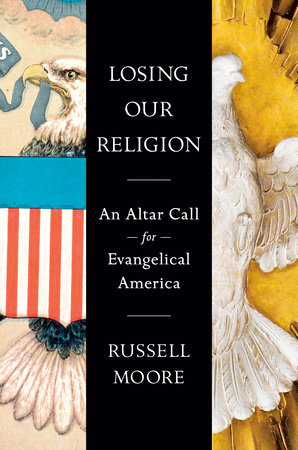This Moore to the Point commentary is the conclusion of a three-part series of commentaries titled “Where the Wild Things Are.”
In the mid-1980s, I was drawn as a pre-teen boy to an NBC television mini-series called V. This program featured peaceful humanoid aliens who arrive in a spacecraft to earth, promising medical and technological wisdom. The tension point of the narrative came when the “visitors” were revealed to be reptilian creatures hiding behind latex human masks. The television audience was expected to wince in horror when the civilized-looking aliens held guinea pigs over their heads and devoured them whole, with unlocked expanding snake-like jaws.
In his book Monster of God: The Man-Eating Predator in the Jungles of History and the Mind (W.W. Norton, 2003), David Quammen hypothesizes that there is something especially fearful and fascinating for humans about large, predatory reptiles. Think about the children gathered around the dinosaur exhibit of your local museum, or the hype surrounding movies such as Snakes on a Plane. Quammen roots this reptile phobia in our evolutionary DNA. But what is such a morbid fascination is indeed archetypal, though not quite in a Jungian sense.
Could it be that our fascination with dangerous animals, including reptilian ones, is really just part of a much larger longing for a Christ? After all, the Genesis narrative tells us that the original creation was not violent, but not because of some “natural” tranquility of the animals themselves. Instead, it is because the Creator placed a vice-regent, formed in his image, over all of the animals. This man was to rule “over every living thing that moves on the earth” (Gen 1:28 ESV). All things were put “under his feet” (Ps 8:6).
This means peace between humans and animals, but also peace among the animals themselves. The Scripture implies that carnivorous activity does not begin until the shalom of Eden is disrupted. This is the state of nature, as originally and intelligently designed.
But our first ancestor, rather than rule the beasts, chooses to be ruled by the craftiest of the beasts of the field, the serpent, ruled through his appetite. And so he becomes “meat” for the first alpha predator, a being described across the canon as a Serpent, a twisting sea monster, a wolf in a sheep pen, a dragon that seeks to devour a man-child, and a roaring lion that desires to eat us alive.
And contrary to the “spiritual” pietism of much of contemporary Christian thought, the wreckage from Eden is not just the spiritual bondage of humanity. The apostle Paul tells the church at Rome that the entire creation groans for liberation from the curse (Rom 8:21-22).
It is not, as the high priests of Darwin tell us, that we are animals aspiring to something great. Instead, we are kings and queens who have become animal-like. After surrendering rule to a reptilian invader, we now turn to animals, birds, and reptiles in our distorted worship (Rom 1:23). After having the rule over everything that creeps across the ground, we now have to be reminded to look to one of the smallest creeping things, the ant, for an example of how to carry out the original human mandate to work the ground (Prov 6:6). We must be reminded now not to act as animals that are governed by appetites (2 Pet 2:22). Indeed, even as Christians, we must be reminded by the apostle Paul not to “bite and devour” one another, as we once did in the old order.
A Christian theology of animals ought to challenge the reigning secular creation myth. It ought also to challenge the reigning secular eschatology. The vicious dance between predator and prey reminds us that the warp and woof of the cosmos is not about the inevitability of progress, even though human beings seem to long for such. Our children shout with glee at the idea of fighting Godzilla, but they also cry at the death of Bambi or Old Yeller. As Christians, we see something on the horizon that Darwinism misses altogether: the ultimate resolution of the predatory cycle.
The messianic kingdom long promised by the prophets doesn’t simply mean spiritual bliss for humans. It means a cosmic restoration of human rule over the animals, a reversal of the curse of death that now holds even them in bondage. This means, as Isaiah tells us, that in the new creation, “the cow and the bear shall graze; their young shall lie down together; and the lion shall eat straw like the ox” while even a baby can safely “lay over the hole of the cobra” (Isa 11:7).
This is because in Christ the creation will no longer ask the dreaded question first posed to a couple cowering in the vegetation given to them for food: “Adam, where are you?” (Gen 3:9). The gospel, then, is not simply a message of “how to get saved” and escape creation. It is a message of the triumph of a divine-human Messiah whose blessings flow, in the words of hymn-writer Isaac Watts, “far as the curse is found.”
Indeed, we already see the beginnings of this cosmic triumph. The first advent of the Messiah saw long-waiting Israelites and Eastern Gentile stargazers drawn to the presence of one born in a cattle trough, surrounded by beasts. Mark tells us that as Jesus triumphed over the temptations of the Serpent in the wilderness, “the wild animals were with him” (Mark 1:13). Jesus is described as a dragon-slayer (Rev 12) and a wolf-killer (John 10:11-12). When he confronts the ultimate expression of human rebellion against God, the opponent is pictured not as a machine but as a beast rising out of the seas (Rev 13:1).
Moreover, while Jesus is a sacrifical Lamb dying for the sins of the world, he is also an “alpha predator” himself, a fearsome Lion of the tribe of Judah (Gen 49:8-12; Rev 5:5). And he is, as C.S. Lewis reminds us, “not a tame Lion.”
This returns me to the bedtime stories with my two young sons, to their fascination with the story of Moses and the brazen serpent in the wilderness. I don’t think this is just a morbid fascination with snakes or with danger. In fact, they are never satisfied to leave the story there with Moses. They wait in silence until we turn to the picture of Golgotha.
That’s when I tell them how, mysteriously, this seemingly helplessly executed man confronted the snake of Eden right there on the “other pole,” and finally did what God had promised since the beginning of history. He crushed its head. He went out beyond the gates of the Holy City, to “where the wild things are.” And he conquered wildness forever.
They seem to sleep better hearing that. And so do I.






